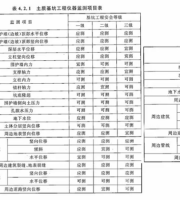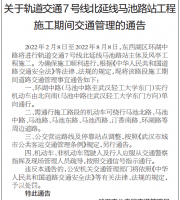1
.
The identification rules of actual constructors, the contract law and other basic civil and commercial laws do not provide for actual constructors, and the administrative regulations of the State Council, such as the regulations on the quality management of construction projects and the regulations on the safety production management of construction projects, also do not provide for actual constructors
.
As a concept and subject, actual constructors first appear in the interpretation (1), aiming at protecting the wages of migrant workers in the construction market Interpretation (2) follows the provisions of interpretation (1)
.
Neither interpretation (1) nor interpretation (2) defines the connotation and extension of the actual constructor
.
The book “understanding and application of judicial interpretation of construction contract of the Supreme People’s court” defines the actual constructor as “the contractor of invalid contract, the sub contractor, the contractor of illegal sub contract, and the contractor who is not qualified to sign the construction contract with others in the name of qualified construction enterprise” [1]
.
Although the definition lists the typical actual constructor However, it fails to highlight the physical and chemical properties of the labor, capital and material costs invested by the actual construction personnel; the Beijing High Court’s “solutions to some difficult problems in the trial of construction contract disputes cases” clearly states that “if the construction project has been subcontracted several times, the actual construction personnel shall be the legal person, unincorporated enterprise and individual contractor who finally actually invested the capital, materials and labor for the project construction It emphasizes that the actual constructors must “actually invest funds, materials and labor to carry out the project construction”
.
Hebei high court “construction contract cases trial guide” will be the existence of the following acts identified as the actual construction: the existence of actual construction behavior; participate in the signing and performance of construction contract process; the existence of investment or collection behavior
.
In our opinion, the actual construction person generally refers to the natural person, legal person or other organization that conducts separate settlement with the owner, affiliated unit and sub contractor for relatively independent single project by raising funds, organizing personnel and machinery to enter the construction site, and after the project is completed and accepted
.
It is mainly manifested as: the civil subject attached to the name of other construction enterprises or borrowing the qualification of other construction enterprises and organizing personnel and machinery to carry out the actual construction; the civil subject of the final actual construction in the activities of layer upon layer subcontracting and illegal subcontracting
.
Combined with the trial practice, we believe that the following subjects are not actual constructors, such as migrant workers, construction team leaders, labor subcontracting enterprises, etc
.
Individuals and enterprises who do not participate in the construction and only lend funds to the actual construction personnel, and then join the construction due to the loan relationship, generally should not be identified as the actual construction personnel, but their legal relationship should be identified as loan
.
2
.
Analysis of the related litigation rights of the actual constructors according to the provisions and spirit of the law and relevant judicial interpretation, the objects of the actual constructors’ substantive rights on the project funds are the subcontractors, illegal subcontractors, affiliated persons, etc
.
who have contractual relationship with them, and the employer (construction unit) who has no contractual relationship with them
.
As for other subcontractors and illegal subcontractors, although they are included in the category of litigation subject (third party) in interpretation (1) and interpretation (2), according to Article 24 of interpretation (2), the main function is to find out the amount of project payment owed by the employer
.
If the actual constructor directly claims the rights of the defendant with the subcontractor or illegal subcontractor who has no contractual relationship with him, the lawsuit shall be rejected
.
In order to find out the facts of the case, if the people’s court lists the subcontractor and illegal subcontractor who have no contractual relationship with the actual constructor as the third party, and the actual constructor requests the subcontractor and illegal subcontractor who have no contractual relationship with the actual constructor to bear the payment responsibility, the people’s court will not support it
.
Except that the employer has paid all the project funds to the above-mentioned subcontractors and illegal employer
.
Can two or more actual constructors take illegal subcontractor and employer as defendants at the same time? We believe that it should be dealt with separately according to different situations
.
For example, as the employer, a contracts out the project to B for construction, B subcontracts the project to C, C then illegally subcontracts part of the project to D and E for construction, and e then illegally subcontracts part of the project to f and G for construction
.
If f and G form an illegal partnership for the construction of a non divisible bid section, it is a necessary joint action
.
When f or G Sue separately, the people’s court should add g or F as the plaintiff of the necessary joint action; if f and G contract a building separately from e, although the subject, subject matter, project payment, paid and so on are not the same, they belong to the common joint action because the subject matter of the action belongs to the same type With the consent of the parties, the people’s court can try the same lawsuit together; when D takes C and a as the defendant, f takes E and a as the defendant, although the subject matter belongs to the same kind, because D and C, F and E are different litigation subjects, although a is also a co defendant at this time, a, as the employer, only undertakes the payment responsibility within the scope of the project payment owed, so such cases are generally not carried out Joint trial
.
3
.
Analysis of the application of relevant provisions when affiliation exists, can the provisions of Article 24 and Article 25 of interpretation (2) be applied? In our opinion, affiliation is generally divided into two types: in one case, the employer and the affiliation have an agreement on the project construction, but because the affiliation has no qualification, the contract is signed and constructed by borrowing the qualification and name of others; in the other case, the affiliation and the affiliation agree that the project and construction shall be undertaken by the affiliation in the name and qualification of the affiliation, and the employer does not know the affiliation when signing the contract It depends on the existence of the situation
.
In the former case, because the employer and the affiliated party have the construction agreement and the actual construction, and the internal contract between the affiliated party and the affiliated party is invalid due to the affiliated, the affiliated party can claim the project payment owed to the employer; in the latter case, and the employer does not know that the project is constructed by the actual constructor, it is difficult to say that there is a construction gap between the affiliated party and the actual constructor Therefore, there are great differences on the issue of whether the actual constructor has the right to take the employer as the defendant, which is not stipulated in the final interpretation (2)
.
Can the affiliated person file a suit of subrogation according to Article 25? As for the nature of subrogation, some people think that subrogation belongs to the preservation of debt in legal theory
.
It is not the right of claim, but the right of management with the content of exercising other people’s rights
.
It belongs to legal creditor’s rights
.
[1] It requires that the creditor’s right to the debtor and the debtor’s right to the secondary debtor have legitimacy and certainty
.
We believe that there is a premise for the subrogation stipulated in Article 25, that is, the actual constructor has a construction contract relationship with the affiliated unit, whether in the name of internal contract or ordinary contract
.
When the affiliated unit settles accounts with the employer but is lazy to exercise the creditor’s rights, can the affiliated party file a suit of subrogation? We think that the affiliated person can claim when the project is completed and accepted
.
Considering the actual situation in the field of construction engineering, there is no requirement on whether the affiliated person and the affiliated unit settle accounts
.
In addition, in view of the illegality of the affiliated itself, the legitimacy of its creditor’s rights can be appropriately weakened
.
4
.
The basic principle of contract law is the relativity of contract
.
In the construction contract dispute cases of construction projects, most of the actual constructors have no direct contractual relationship with the employer
.
Based on the consideration of protecting the basic survival rights and interests of migrant workers, the interpretation (1) breaks through the relativity of the contract
.
The actual constructors can claim rights with the employer as the defendant in Article 26 (2), and Article 24 of the interpretation (2) follows this provision
.
It should be noted that the actual construction contractor can not expand the contract as the defendant at will, and it is not unconditional
.
The premise is that the contractor should settle accounts but not settle accounts or claim rights on the project settlement, so that the actual construction contractor can not guarantee the realization of his rights without directly suing the employer.
.



